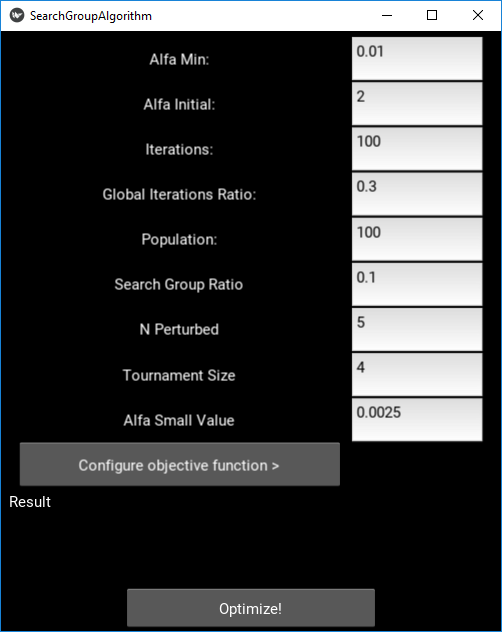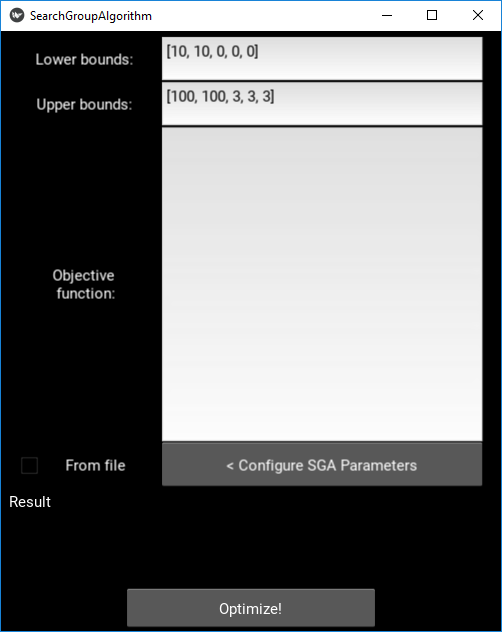A python adaptation to matlab Search Group Algorithm code
The Search Group Algorithm (SGA) is a metaheuristic optimization method for nonlinear, nonconvex, nonsmooth, multimodal, bounded optimization problems. You may also find a tutorial in a pdf file, which is a step by step explanation about how to use the SGA code. The sections and equations cited in this file refer to the paper that presented the SGA: M.S. Gonçalves, R.H. Lopez, L.F.F. Miguel, “Search group algorithm: A new metaheuristic method for the optimization of truss structures”, Computers & Structures, 153:165-184, 2015. DOI: 0.1016/j.compstruc.2015.03.003 This paper may also be download at Research Gate:
or from science direct at:
http://www.sciencedirect.com/science/article/pii/S0045794915000851
The m-files original codes is provide from https://www.mathworks.com/matlabcentral/fileexchange/50598-search-group-algorithm-matlab-code
Actually is working in python 3.x. The following modules are necessary:
- numpy (all)
- kivy (for app only)
Use pip to install. For only the function without GUI App:
pip install pysgaThis will install numpy if necessary.
For GUI App:
pip install pysga[full]This will install the kivy module and dependencies. For any error, consult de kivy documentation.
from pysga.sgaApp import SearchGroupAlgorithmApp
from kivy.config import Config
Config.set('graphics', 'width', '500')
Config.set('graphics', 'height', '600')
app = SearchGroupAlgorithmApp()
app.run()Put a "fobj_function.py" file in current directory and define your objective function as "fobj" function. Example:
import numpy as np
# Example function
def fobj(x):
y = np.zeros((x.shape[0], 1))
s1 = np.zeros(x.shape[0])
s2 = np.zeros(x.shape[0])
for i in range(5):
n = i + 1
s1 = s1 + n * np.cos((n + 1) * x[:, 0] + n)
s2 = s2 + n * np.cos((n + 1) * x[:, 1] + n)
y[:, 0] = s1 * s2
return yThe "x" variable is entry for the objective function with shape (SearchSize, n). SearchSize is the size of the optimization algorithm search group and n is the objective function dimension.
When run the app, choose the "from file" option and run the optimizer.
It is really simple. Just import the module and then configure the SGA parameters, the function and run:
import pysga
# Define your fobj function:
def my_fobj(x):
pass
# define the objective function class with your lower and upper bounds:
# inf and sup should be a numpy array
f = pysga.ObjectiveFunc(inf=my_inf, sup=mysup)
# overwrite evaluate with your objective function:
f.evaluate = my_fobj
# set the sga parameters, without setting the defaults values will be used
sga_params = pysga.ParamsSGA()
# run the SGA optimization:
x, y = pysga.run(sga=sga_params, fobj=f)
# with SGA's defaults parameters you can hide the sga class:
# x, y = pysga.run(fobj=f)
print('The minimun value of the function is %s at point %s' % (y, x))
